A Non-Science Person’s Perspective
I’ve never been a “science person.” By this I mean I didn’t care for science classes when I was a student. I remember taking physical science, biology, and chemistry in high school because they were required to attend university, but I don’t remember enjoying them.
I’ve always chocked this up to being an “arts” person. I loved my English, history, and drama class. In fact, my love of the arts was so strong that I elected to skip physics (it wasn’t an a-g requirement) for an extra year of drama!
Flash forward fourteen years, and I am now the marketing and outreach manager for CalRecycle’s Office of Education and the Environment (OEE), the state department charged with implementing the Education and the Environment Initiative (EEI), a K–12 model curriculum that teaches history and science through an environmental lens.
I never thought that I’d end up in an occupation that would require me to delve into the world of science, but thanks to the coming of the Next Generation Science Standards (NGSS), like many educators in California I have been on a journey to understand these new standards. California adopted the NGSS in 2013, and is finalizing a Science Framework that will guide publishers on what to include in new K-8 science textbooks. For the first time ever this Science Framework will include the Environmental Principles and Concepts, which are the backbone of the EEI Curriculum. As teachers prepare new NGSS lessons to teach in their classrooms I have been looking into what does NGSS instruction look like and how can environment-based resources help teachers transition to this new instructional style?
As a non-educator, and self-professed “not-a-science-person,” I’ve been on a steep learning curve as I seek to make sense of NGSS. Luckily, I got the recent opportunity to learn more about the NGSS by attending the EEI Training Institute in Folsom, California.
Sponsored by our partners at Ten Strands, this annual event gathers educators and environmental literacy experts together for the purpose of professional learning and information sharing. This year’s institute was attended by more than 40 individuals including active and retired classroom teachers, representatives from the California Department of Education (CDE), the California Regional Environmental Education Community (CREEC), the State Education and Environment RoundTable (SEER), and CalRecycle’s OEE. Training sessions were spread out over two days, and focused primarily on NGSS and identifying ways that the EEI Curriculum and other environmental education resources can be used to create NGSS lessons. They also touched on how the Environmental Principles and Concepts will now be a part of science instruction in California.
The first day’s activity centered on having us all experience an environment-based NGSS lesson. Led by EEI Teacher Ambassador Kurt Holland and CDE’s Chris Breazeale, we began by stepping outside the classroom and into the nearby nature area at the Folsom Powerhouse State Historic Park. There, we were given science notebooks and asked to play the role of “student” by listing the living and non-living components we observed in the area. After jotting down our notes, we headed back indoors and got into groups to draw diagrams depicting how energy flows between the living and non-living components that we observed.

Groups then presented our energy cycle diagrams to one another. After the presentations, participants were asked to consider whether they had learned anything new from their fellow students, and if so, to revisit their diagrams and revise them based on this new information. We learned a lot! Next, groups were given additional activities from the EEI Curriculum. Some groups engaged in a role playing game from the unit Energy: Past It On! and other groups played a food chain game from Plants: The Ultimate Energy Resource. We also read journal entries from an explorer describing life in three different natural regions in California from the Student Edition of Energy: Past It On!
In this way—engaging in discussion, observing and critiquing the work of others, and acquiring new knowledge through readings and other activities—we went through several more iterations of adding to and revising our diagrams to demonstrate our increasingly refined understanding of the flow of energy through our local oak woodland ecosystem. I found the whole exercise to be especially relevant and engaging thanks to our ability to step outside of the classroom and explore the local environment. Witnessing real-world connections first-hand was a powerful experience.
This NGSS modeling activity was just one of many sessions that were conducted at the institute, but I choose to highlight it because it was a major “a-ha” moment for me. In addition to allowing me to see what NGSS instruction looks like and how environmental resources can be pulled into a lesson to support “three-dimensional learning,” the activities served the greater purpose of driving home the message that NGSS is all about encouraging right thinking, not just right answers.
Our “teachers” for the morning did a great job of creating an environment where we, the students, were allowed to take risks, make mistakes, and learn from them. I didn’t even realize until afterward that I was doing science. Imagine that! A self-professed “not-a-science-person” thinking like a scientist! Rather than merely focusing on getting the “right answer” to a question, I discovered that NGSS is all about the process of learning through investigation, collaboration, and discovery; and that, in my opinion, is a skill that students can use throughout their life no matter what profession they decide to pursue.
Having experienced an NGSS lesson, I am no longer sure that I am not a “science person.” Perhaps high-school-me might have found science class more interesting had I been exposed to environment-based NGSS science lessons.
However, one thing is certain. Attending the EEI Training Institute has left me eager for the back-to-school season to arrive. The transition to NGSS will undoubtedly present challenges, but I’m convinced it will also offer a tremendous opportunity to foster environmental literacy for all California students. While new state-adopted science materials are still a couple of years away, teachers can begin harvesting great environment-based materials from resources, like EEI, to use in their own NGSS-focused lessons. As I experienced in the modeling activity at the institute, environment-based materials are a great way to place NGSS lessons into a real world context and to awaken and engage the “science person” in every student.

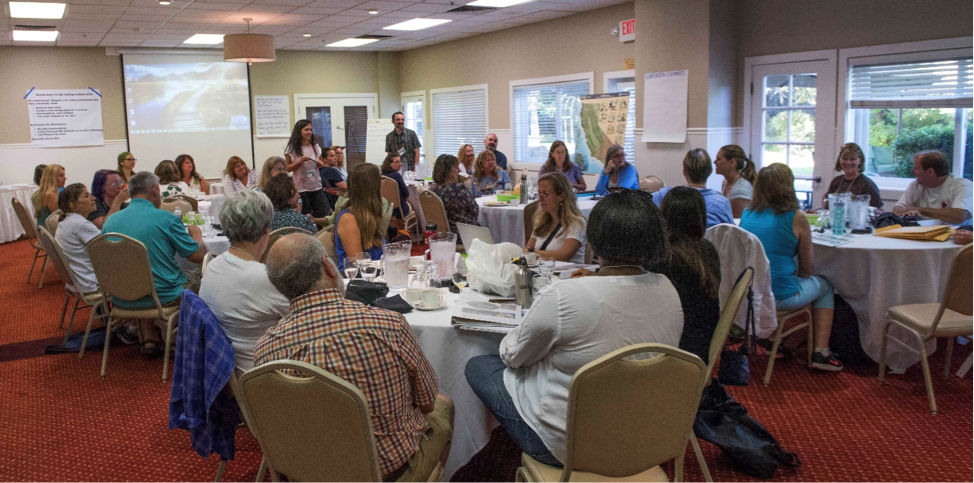
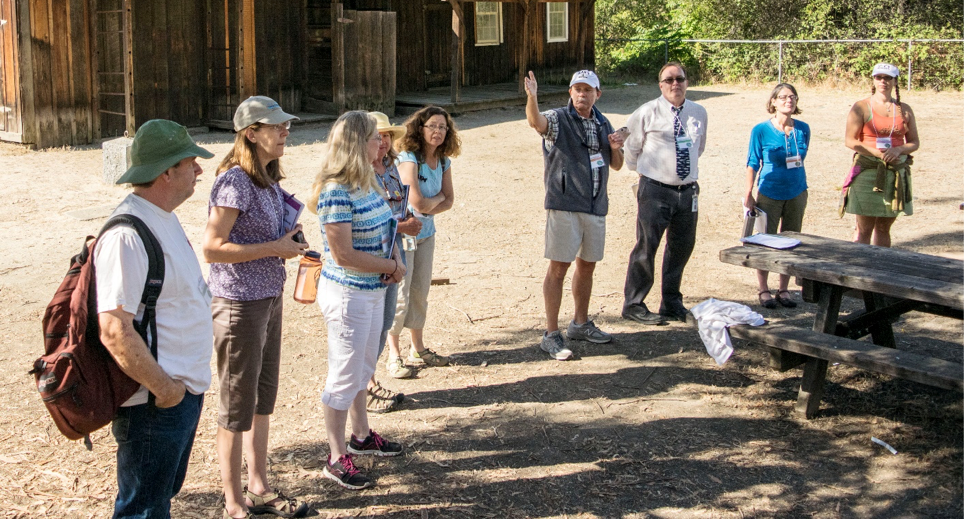
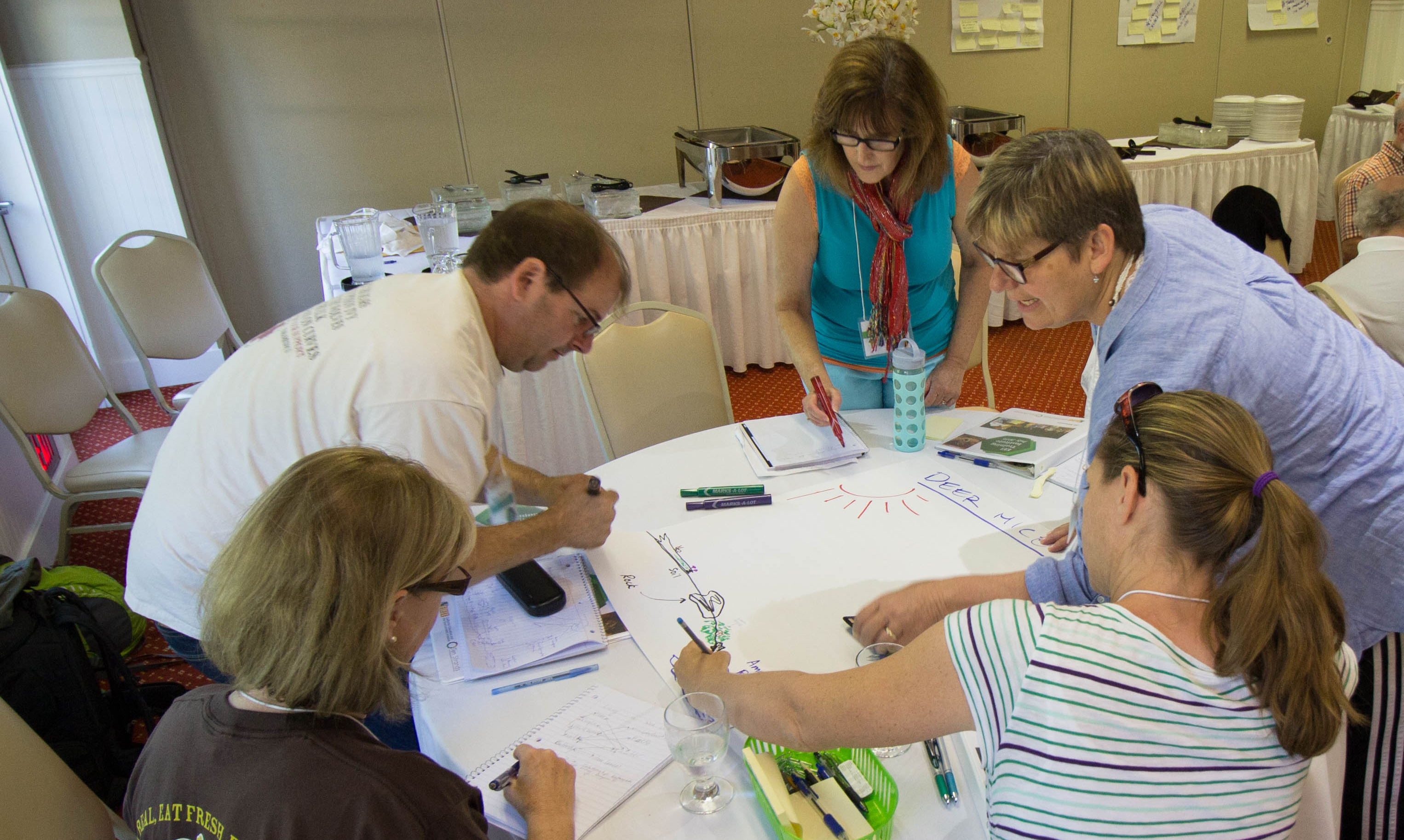
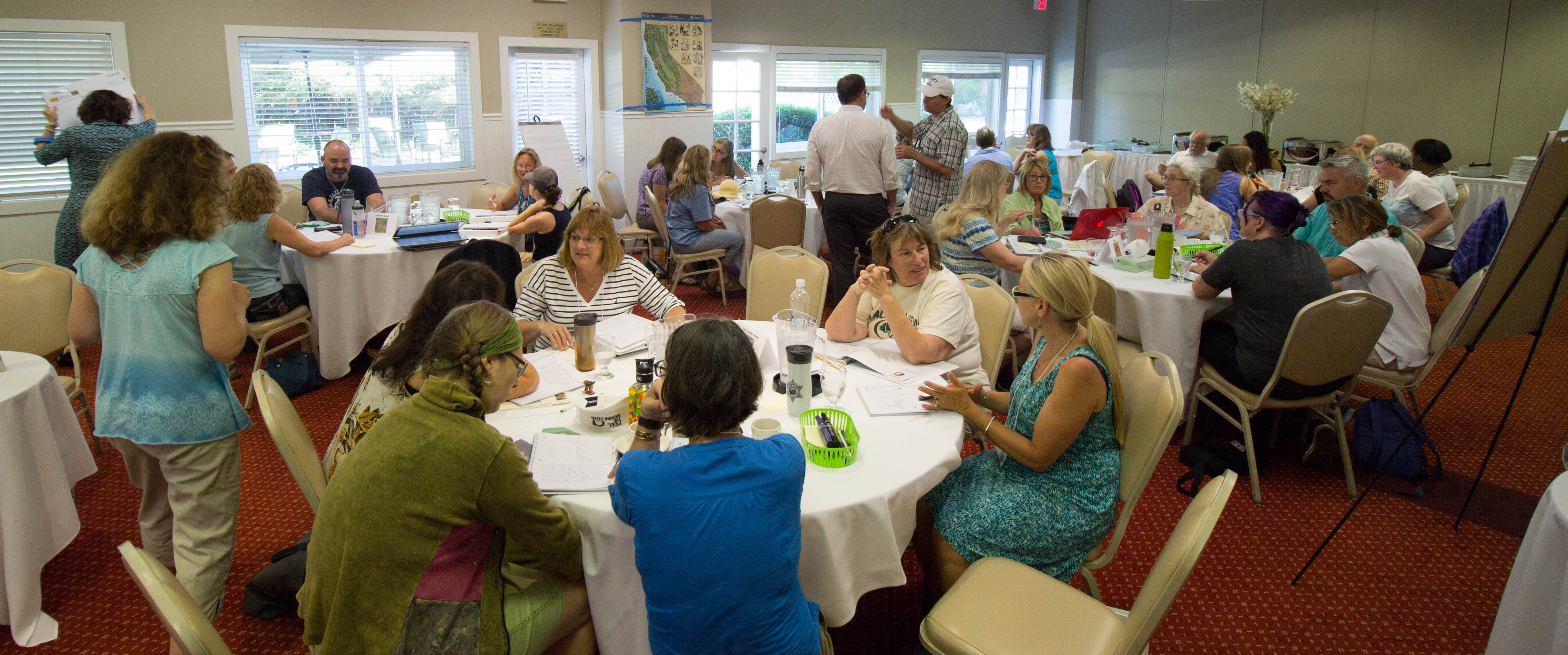
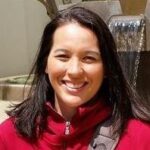
2 Responses
Great post and nice summary of the event. There is a long road ahead of us in NGSS implementation but it’s exciting to see the dedication and enthusiasm of the Teacher Ambassadors, OEE staff and CREEC Coordinators to meet the challenge. Nice work Kelly!
Clear and powerful highlighting of the first day. I especially enjoyed your articulation of the linkage between “doing science” and thinking like a scientist and will use this in future trainings. I was also thrilled to read that you shed the shackles of “not a science person.” As you put it so eloquently, environment based science is about creative questioning, collaboration, and communication; 21st century skills that apply to any profession. Well done.